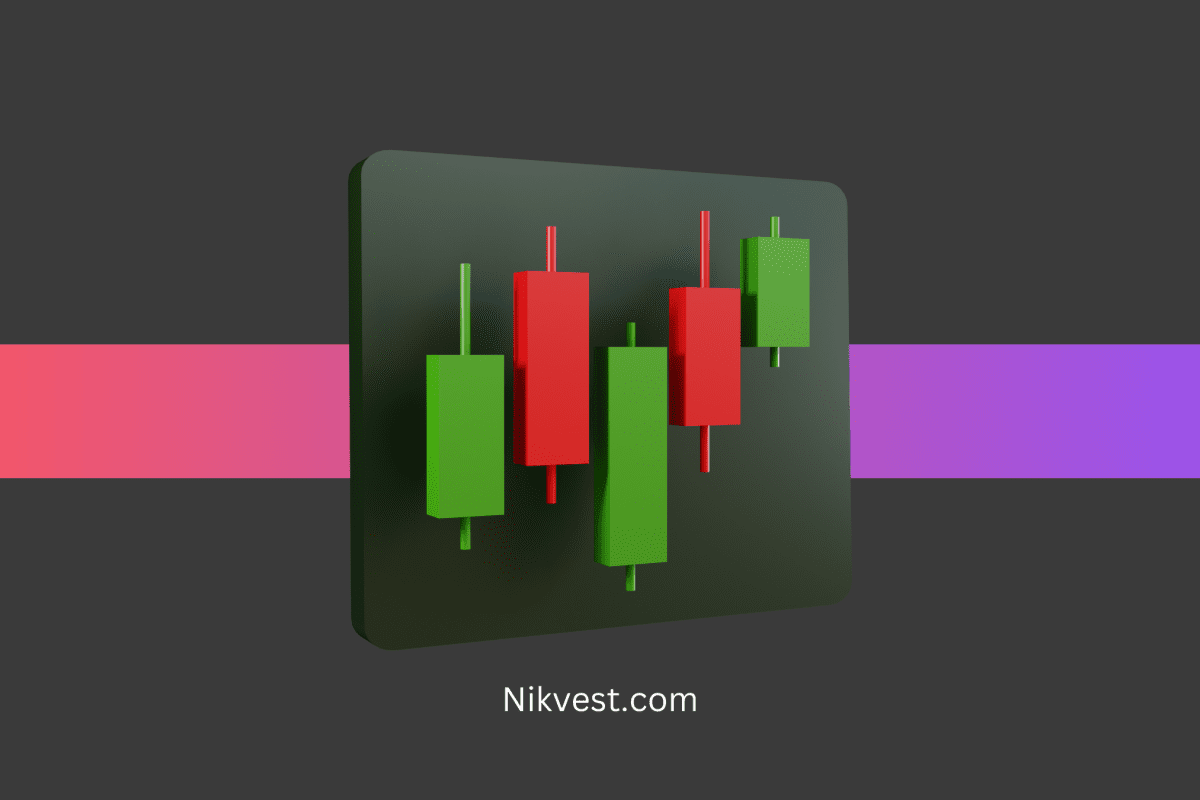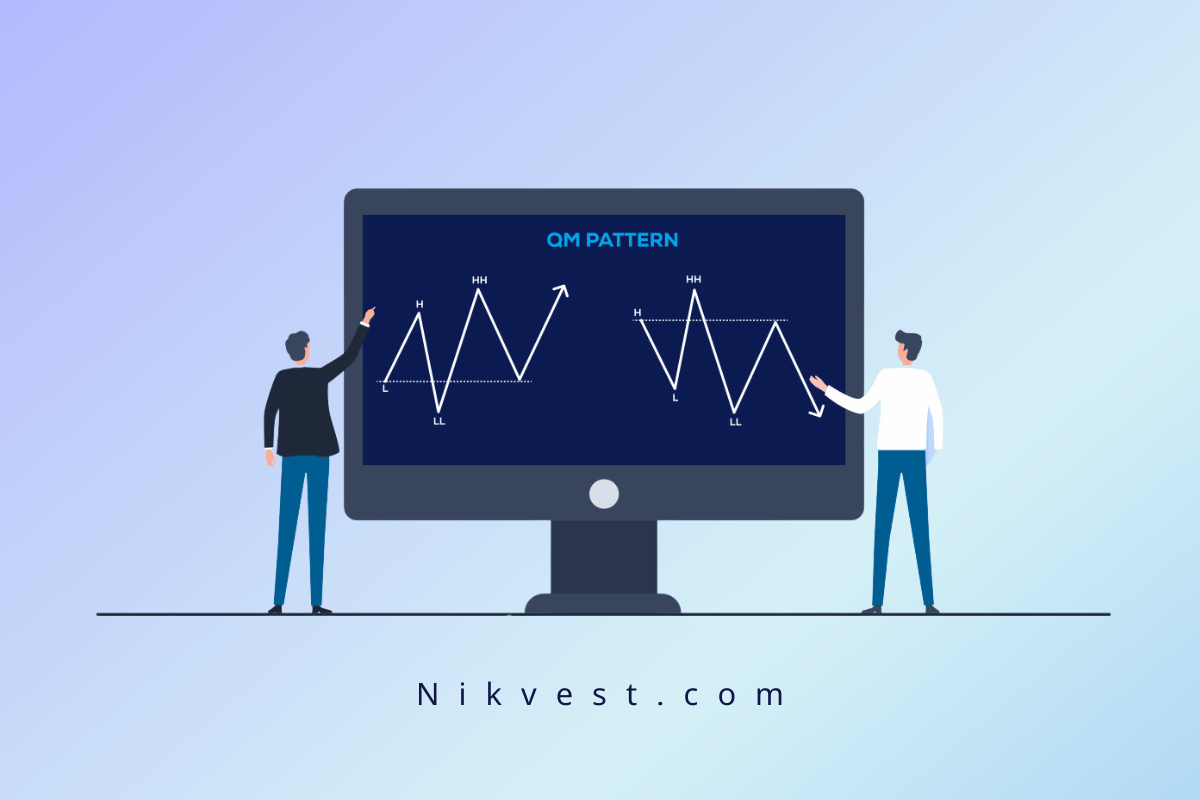Trend Following Strategy: Riding the Market Waves
Trend Following Strategy is a proven, systematic trading strategy that capitalizes on the natural movement of financial markets in sustained directions, whether upward or downward. Instead of attempting to predict market reversals or future price movements, trend followers aim to identify established trends and trade in the same direction until the trend weakens or reverses. This approach is grounded in a disciplined, rules-based framework, often using technical tools like moving averages and momentum indicators to remove emotional decision-making from the process.
The strategy’s versatility allows it to be applied across various asset classes, including stocks, commodities, currencies, and cryptocurrencies. Trend Following Strategy thrives in markets with clear directional movement and is favored for long-term trading. This article delves into the core principles of Trend Following Strategy , including trend identification, risk management, and multi-asset applications. It also addresses the challenges faced by trend followers and explores how advancements in technology, such as AI and machine learning, are shaping the future of this approach.
Understanding how to manage financial markets in an organized way
Before diving into trend-following itself, it’s crucial to understand the framework of systematic management, within which Trend Following Strategy operates. In financial markets, systematic management refers to a rules-based approach to trading. This means that traders use pre-determined algorithms and models to execute trades rather than relying on subjective judgments or emotional decision-making.
Trend Following Strategy fits perfectly into the systematic management paradigm. Traders establish rules for entering and exiting trades, typically based on technical indicators such as moving averages, momentum oscillators, or price breakouts. These rules are then applied consistently across various market conditions, with risk management and position sizing pre-determined by the system.
While systematic strategies have their downsides—chiefly, their reliance on historical data, which may not always predict future performance—they provide traders with a disciplined, data-driven approach to navigating the complexities of financial markets.
The basics of Trend Following Strategy in the market
This is likely the first strategy you learned as a trader – the simple method of following market trends. It’s the basic skill of going along with the market’s ups and downs.
Trend Following Strategy is an investment strategy that aims to profit from price changes, whether rising or falling, in markets like stocks, bonds, interest rates, commodities, and currencies.
Throughout history, price movements in financial and commodity markets have followed patterns, with values going up and down over several years.
Key Concepts in Trend Following Strategy
- Trend Identification: Traders use various tools and indicators to identify the direction and strength of a trend. For example, an uptrend is characterized by higher highs and higher lows, while a downtrend is characterized by lower highs and lower lows.
- Price Action: The core belief in Trend Following Strategy is that price action is the most important indicator. If the price is trending upward, trend followers will look for buying opportunities, and if the price is trending downward, they will look for selling opportunities.
- Indicators: Commonly used tools for trend identification include moving averages, trendlines, and momentum indicators like the Relative Strength Index (RSI) or the Moving Average Convergence Divergence (MACD).
A key takeaway in Trend Following Strategy is that traders are not concerned with predicting when a trend will start or end. Instead, they wait for confirmation that a trend is in place before entering the market, and they continue to hold their position until the trend shows signs of weakening or reversal.
The Process of Trend Following Strategy
- Trend Detection: The first step is identifying the presence of a trend. Tools like moving averages and breakouts help traders determine whether a market is trending.
- Entry Signal: Once a trend has been confirmed, a trader enters the market in the direction of the trend. For example, in an uptrend, a trader might buy the asset once the price breaks through a resistance level.
- Risk Management: Setting stop-loss orders and managing position sizes are critical to minimizing losses if the trend reverses unexpectedly.
- Trend Continuation: As the trend progresses, traders often adjust their position using tools like trailing stops to lock in profits while allowing the trade to continue benefiting from the trend.
- Exit Signal: Traders exit their positions when the trend shows signs of reversal, either through price action or other indicators.
Finding and understanding market trends
Identifying trends is the most critical component of a trend-following strategy. Trends occur in all markets and across all timeframes. However, recognizing a legitimate trend, as opposed to temporary price fluctuations, is crucial to the success of a trend-following approach.
Types of Trends
Uptrend: An uptrend is characterized by higher highs and higher lows. This indicates that the asset is gaining in value, and traders would typically look to buy in this scenario.
Downtrend: A downtrend is characterized by lower highs and lower lows, signaling that the asset is losing value. Trend followers would generally sell or short the asset during a downtrend.
Sideways Trend: Also known as range-bound or consolidating markets, sideways trends occur when the price moves within a narrow range, making it difficult for trend followers to profit.
Tools for Trend Identification
Moving Averages: Simple moving averages (SMA) and exponential moving averages (EMA) are widely used to smooth price data and provide a clearer picture of a trend’s direction. A common strategy is the moving average crossover, where traders buy when the short-term moving average crosses above the long-term moving average and sell when the reverse happens.
Trendlines: By drawing lines connecting the higher lows in an uptrend or the lower highs in a downtrend, traders can visualize the trend and use these lines to determine potential points of entry or exit
Breakout Strategies: Breakouts occur when the price moves beyond a previously established resistance or support level, indicating the start of a new trend.
Momentum Indicators: Tools like the RSI or MACD can help traders assess the strength of a trend. If the RSI is high, it may suggest that an uptrend is losing momentum, while a low RSI might indicate a weakening downtrend.
Volume Analysis: Volume can act as a confirmation tool for trends. For example, if an asset is rising in price on increasing volume, it signals that the trend is supported by a broad base of buyers, which makes the trend more likely to continue.
How risk management is important in Trend Following Strategy?
Risk management is paramount in trend-following strategies, as no trend is guaranteed to last indefinitely. Market reversals can happen quickly and unexpectedly, making it essential for traders to manage their risk effectively. The most successful trend followers do not just focus on identifying trends—they also have a solid plan for protecting their capital when trades don’t go as planned.
Position Sizing
The first aspect of risk management in Trend Following Strategy is position sizing. Traders determine how much of their capital to allocate to a particular trade based on the level of risk they are willing to take. Many traders use a fixed percentage of their overall capital—commonly between 1-2%—as the maximum amount they are willing to risk on a single trade. This ensures that even a series of losing trades will not wipe out their entire account.
Stop Losses
Stop losses are predetermined levels at which a trader will exit a losing trade to limit further losses. For instance, a trend follower in a long position might set a stop loss just below a recent support level, while a trader in a short position might set their stop loss just above a resistance level. These levels act as a safety net, preventing losses from growing uncontrollably.
Trailing Stops
Once a trade becomes profitable, trend followers often use trailing stops to lock in profits while allowing the trade to continue running if the trend persists. A trailing stop moves in the direction of the trend at a predetermined distance from the current price. For example, in an uptrend, a trailing stop might follow the price at a distance of 5% below the current market price, ensuring that if the price reverses by more than 5%, the trade will be closed.
Diversification
Diversification is another key element of risk management. Rather than relying on a single market or asset, trend followers often spread their capital across multiple markets or asset classes. This reduces the overall risk of the portfolio, as losses in one market may be offset by gains in another.
Applying Trend Following Strategy strategies across various asset types
One of the strengths of trend-following strategies is their flexibility. They can be applied across a wide range of asset classes, including stocks, commodities, currencies, and bonds. Each market has its own characteristics and drivers, but the core principles of Trend Following Strategy remain the same.
Stocks
In equity markets, trend followers focus on identifying bullish trends in individual stocks or sectors. They may also employ sector rotation strategies, where capital is shifted from one sector to another as new trends emerge. Stock market trends are often driven by corporate earnings reports, economic data, and broader macroeconomic factors.
Commodities
Commodities, such as oil, gold, and agricultural products, are known for their volatility, which often leads to clear and prolonged trends. This makes them a prime target for trend-following strategies. In commodities markets, trends can be driven by various factors, including supply and demand imbalances, geopolitical events, weather conditions, and broader economic cycles. For instance, a disruption in oil production may trigger an uptrend in oil prices, while a bumper crop season could lead to a downtrend in the prices of agricultural commodities. Trend-following traders in these markets may use breakout strategies or moving averages to capture these trends.
One popular method for Trend Following Strategy in commodities is to focus on the futures market. Futures contracts, which obligate the buyer to purchase a commodity at a predetermined price in the future, are often used to speculate on the direction of commodity prices. Trend-following strategies in this context may involve entering long positions in uptrending commodities or short positions in downtrending ones.
Currencies (Forex)
The foreign exchange (forex) market, where currencies are traded in pairs, is another asset class well-suited for trend-following strategies. Forex markets are driven by macroeconomic factors such as interest rate differentials, monetary policy, and geopolitical events. For example, if a central bank raises interest rates, it may trigger an uptrend in that country’s currency as investors seek higher yields. Conversely, political instability may lead to a downtrend in a currency as investors seek safer assets.
Trend-following traders in forex markets often use technical indicators like moving averages, RSI, and MACD to identify trends in currency pairs. They may also look for breakouts above resistance or below support levels as signals to enter trades. Forex trends can be short-term or long-term, depending on the underlying macroeconomic conditions, making it important for traders to choose their timeframes carefully.
Bonds
Although bonds are generally considered to be less volatile than stocks or commodities, trends do occur in bond markets, especially during periods of changing interest rates. When interest rates rise, bond prices typically fall, leading to potential downtrends in bond markets. Conversely, when interest rates fall, bond prices tend to rise, creating potential uptrends. Trend-following strategies can be used to capture these movements, particularly in the bond futures market or through bond exchange-traded funds (ETFs).
Bond market trends are often driven by factors such as central bank policies, inflation expectations, and changes in credit risk. For example, if inflation is expected to rise, bond yields may increase, leading to a downtrend in bond prices. Trend followers may use moving averages or breakout strategies to enter short positions in bonds during such periods.
Cryptocurrencies
In recent years, the rise of cryptocurrencies like Bitcoin and Ethereum has created new opportunities for trend-following strategies. Cryptocurrencies are known for their extreme volatility, which can result in strong, sustained trends. For example, during a bull market in Bitcoin, prices may rise rapidly for months or even years, providing ample opportunities for trend followers to capture gains.
However, the high volatility of cryptocurrencies also presents challenges, as trends can reverse suddenly due to regulatory changes, market sentiment, or technological developments. Trend-following strategies in the cryptocurrency market often involve using technical indicators to identify breakout levels or moving average crossovers. Additionally, risk management is critical in this market due to its unpredictability.
Checking how effective Trend Following Strategy are
The performance of trend-following strategies can vary significantly depending on market conditions, the specific asset class, and the trader’s ability to manage risk effectively. However, there are several key metrics that traders can use to evaluate the success of their trend-following strategies:
Sharpe Ratio
The Sharpe ratio is one of the most widely used metrics for evaluating the risk-adjusted return of a strategy. It measures the average return earned in excess of the risk-free rate per unit of volatility or risk. A higher Sharpe ratio indicates that the strategy has delivered higher returns relative to the risk taken. In the context of Trend Following Strategy , a high Sharpe ratio suggests that the strategy has been successful in capturing trends without exposing the trader to excessive risk.
Maximum Drawdown
Maximum drawdown measures the largest peak-to-trough decline in a strategy’s equity curve. It is a critical metric for trend followers, as prolonged drawdowns can occur when markets are consolidating or when trends are not well-established. A high maximum drawdown may indicate that the strategy is too risky or that it is not well-suited for certain market conditions. Trend followers must be prepared for periods of drawdown, especially during choppy or sideways markets, and should have a plan in place to manage their exposure during these times.
Win-Loss Ratio
Trend-following strategies typically have a relatively low win rate, meaning that the number of winning trades is often lower than the number of losing trades. However, the key to profitability lies in the magnitude of winning trades, which are often much larger than losing trades. The win-loss ratio helps traders evaluate whether their strategy is generating large enough profits on winning trades to offset the losses incurred on losing trades.
Profit Factor
The profit factor is the ratio of the total profit generated by winning trades to the total loss incurred by losing trades. A profit factor greater than 1 indicates that the strategy is profitable, while a profit factor below 1 suggests that the strategy is losing money. For trend-following strategies, a high profit factor is typically achieved by capturing large gains during sustained trends, even if the win rate is relatively low.
Time in Trade
The time a trader spends in a position is another important metric for evaluating a trend-following strategy. Trend followers often aim to stay in profitable trades for as long as possible to capture the majority of the trend. By analyzing the average time spent in a trade, traders can assess whether their strategy is effectively riding trends or if they are exiting trades prematurely.
Typical challenges and mistakes in Trend Following Strategy
While Trend Following Strategy has a long history of success, it is not without its challenges. Traders must be aware of several common pitfalls that can hinder the performance of a trend-following strategy:
Choppy or Sideways Markets
One of the biggest challenges for trend followers is dealing with choppy or range-bound markets, where prices move sideways without establishing a clear trend. In these conditions, trend-following strategies can generate a series of small losses as trades are entered and exited without capturing any significant price movement. To mitigate this risk, some traders use filters, such as volatility thresholds, to avoid entering trades in choppy markets.
False Breakouts
False breakouts occur when the price briefly moves above a resistance level or below a support level but fails to sustain the move, leading to a reversal. Trend followers may enter trades based on these breakouts, only to be stopped out as the price reverses. To reduce the risk of false breakouts, some traders use confirmation signals, such as waiting for a second breakout or using volume as an indicator of the strength of the breakout.
Overfitting
Overfitting is a common problem in systematic trading strategies, where a model is too finely tuned to historical data and fails to perform well in real-time markets. Overfitted models may perform exceptionally well in backtesting but struggle in live trading due to differences in market conditions. To avoid overfitting, traders should ensure that their strategies are robust across different timeframes, markets, and conditions.
Emotional Discipline
Even though trend-following strategies are systematic and rules-based, traders must maintain emotional discipline. It can be tempting to deviate from the strategy during periods of drawdown or market uncertainty, but doing so often leads to poor decision-making. Successful trend followers adhere to their rules and remain patient, knowing that trends can take time to develop and that losses are a natural part of the strategy.
Conclusion
Trend Following Strategy is a time-tested and versatile trading strategy that can be applied across various asset classes and market conditions. By focusing on identifying and riding market trends, traders can potentially capture significant profits while minimizing the risks associated with predicting market reversals. The key to success in Trend Following lies in maintaining a disciplined, systematic approach, with a strong emphasis on risk management and patience.




















































